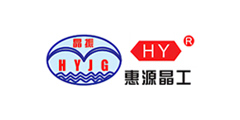What Does a Crystal Oscillator Do?

In this article HUIYUAN CRUSTAL will introduce the functions of a crystal oscillator.
The clock sources of microcontrollers can be divided into two categories: clock sources based on mechanical resonance devices, such as crystal oscillator and ceramic resonance channel; and RC oscillator. One is a Pierce oscillator configuration for crystal and ceramic resonator channels. The other is a simple discrete RC oscillator. Oscillators based on crystal oscillators and ceramic resonator channels generally provide high initial accuracy and low temperature coefficients. The RC oscillator can be started quickly at low cost but usually has poor accuracy over the entire temperature and operating supply voltage range (varying between 5% and 50% of the nominal output frequency). However, its performance is influenced by environmental conditions and the choice of circuit elements. Careful consideration should be given to the component selection and circuit board layout of the oscillator circuit. When in use, the ceramic resonant channel and the corresponding load capacitance must be optimized according to the specific logical sequence.
Crystal oscillations with high Q values are insensitive to amplifier selection but are prone to frequency drift (and possible damage) during overdrive. The environmental factors that affect the operation of the oscillator are electromagnetic interference (EMI), mechanical vibration and shock, humidity, and temperature. These factors increase variations in the output frequency, increase instability, and, in some cases, cause the oscillator to stop vibrating. Most of these problems can be avoided by using the oscillator module. These modules have oscillators that provide low-resistance square wave output and are capable of operating under certain conditions.
The two most commonly used types are the crystal oscillator module and the integrated RC oscillator (silicon oscillator). The crystal oscillator module provides the same precision as the discrete crystal oscillator. The precision of the silicon oscillator is higher than that of the vertical RC oscillator and in most cases can provide the same precision as that of the ceramic resonator channel.
Power consumption should also be considered when choosing an oscillator. The power consumption of a discrete oscillator depends mainly on the power supply current of the feedback amplifier and the capacitance value in the circuit. The power consumption of a CMOS amplifier is proportional to the operating frequency and can be expressed as the value of the power consumption capacitor. For example, the power consumption capacitance of the HC04 inverter door is 90pF. When operating at 4MHz and 5V, the power supply current is equal to 1.8ma. With the crystal load capacitance of 20pF, the total power supply current is 2.2ma. Ceramic resonator circuits usually have large load capacitance and require more current. In contrast, the crystal oscillator module normally requires a power supply current of 10mA to 60mA.
Depending on its type and function, the power supply current of a silicon oscillator can range from a few microamps in a low-frequency (fixed) device to a few milliamps in a programmable device. Low-power silicon oscillator, such as MAX7375, operates at 4MHz with a current of less than 2mA. Optimizing clock sources for specific applications requires a combination of the following factors: accuracy, cost, power consumption, and environmental requirements.
- +1 Like
- Add to Favorites
Recommend
- Quartz Crystal Storage Standard
- How to Prevent the Bad Phenomenon of Crystal Vibration?
- What Problems Should Be Paid Attention to in the Use of Chip Crystal Oscillator?
- How to Choose a High-quality Crystal Oscillator?
- How to Distinguish the Pin Direction of the Chip Crystal Oscillator?
- Main Functional Materials of Quartz Crystal Resonators
- How to Distinguish the Position Direction of SMT Crystal Oscillator?
- The Difference Between a Quartz Crystal Resonator and a Quartz Crystal Oscillator
This document is provided by Sekorm Platform for VIP exclusive service. The copyright is owned by Sekorm. Without authorization, any medias, websites or individual are not allowed to reprint. When authorizing the reprint, the link of www.sekorm.com must be indicated.






























































































































































































































































































































































































































































































































































































































































































































































































































































































